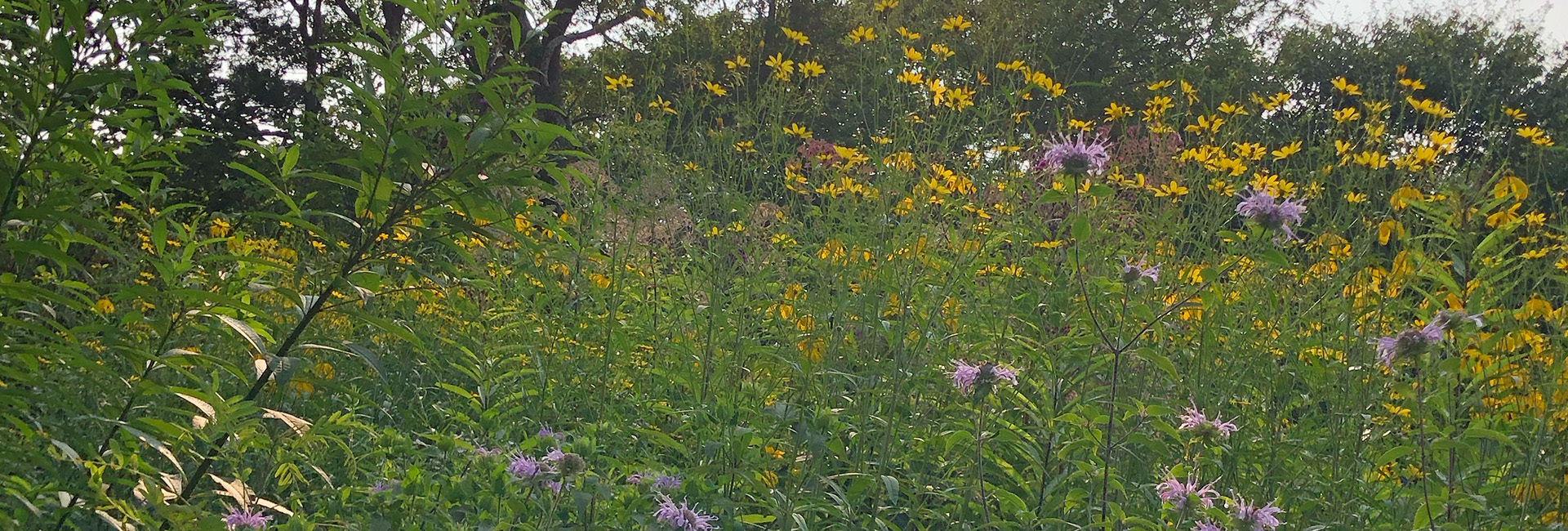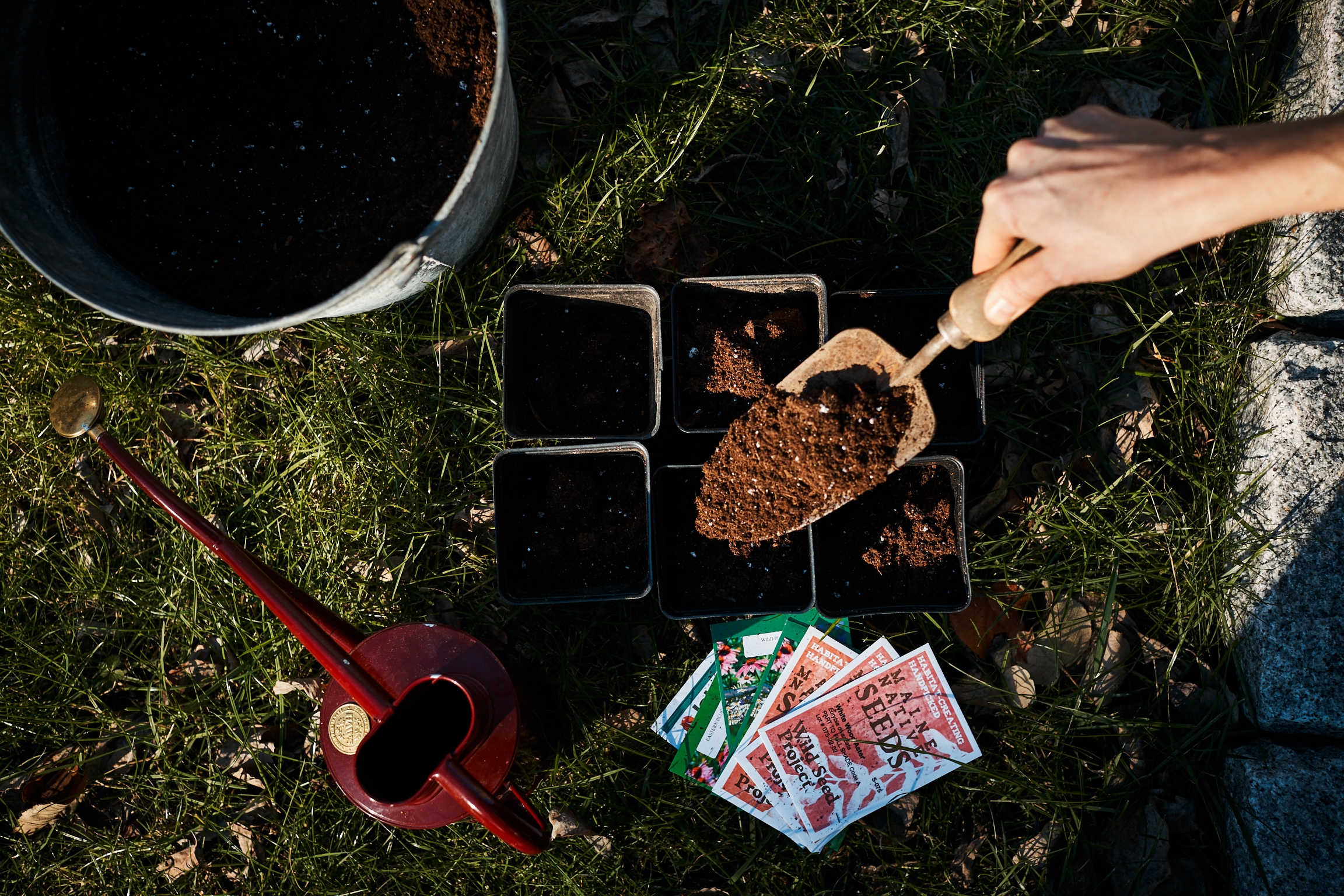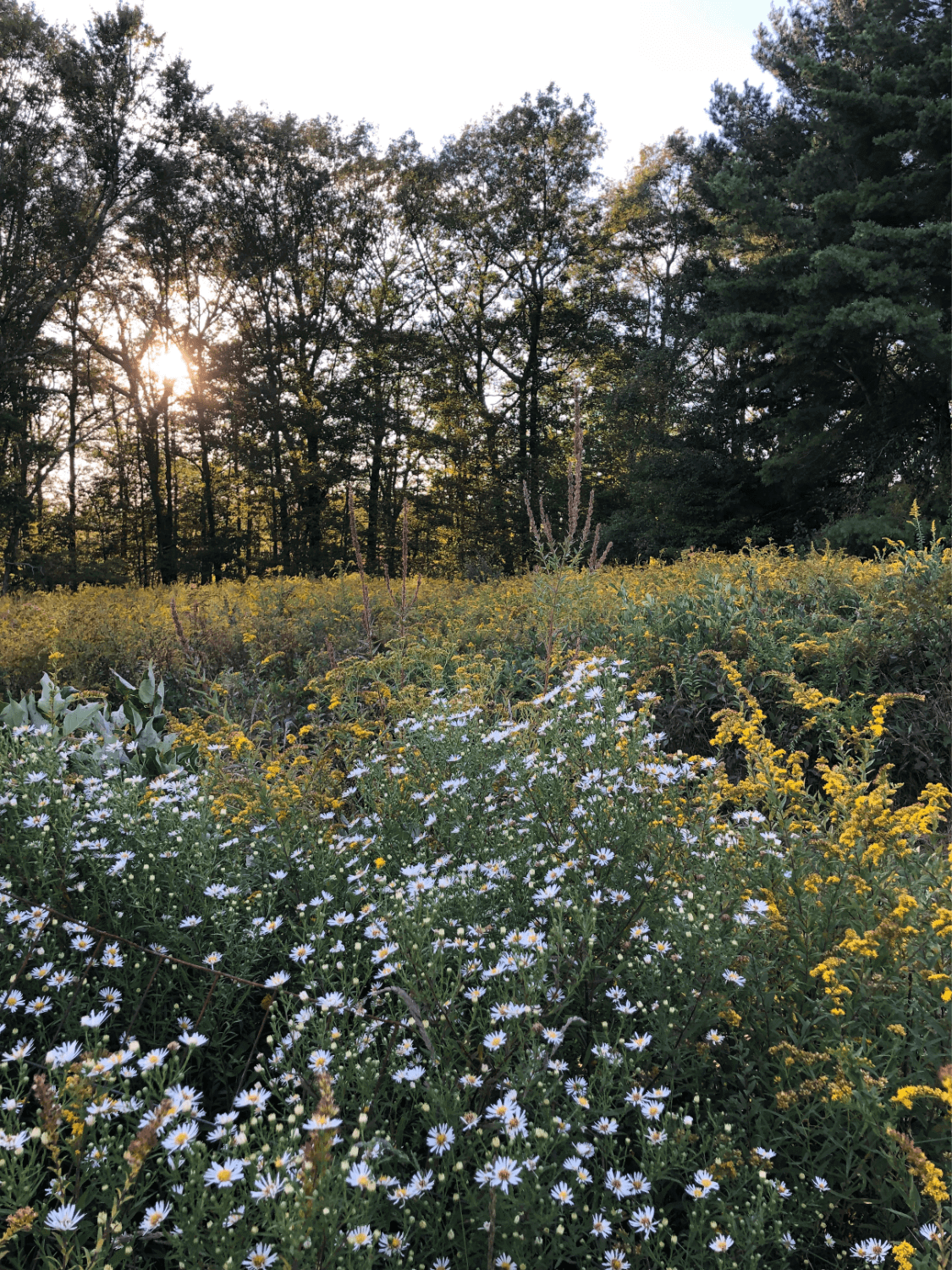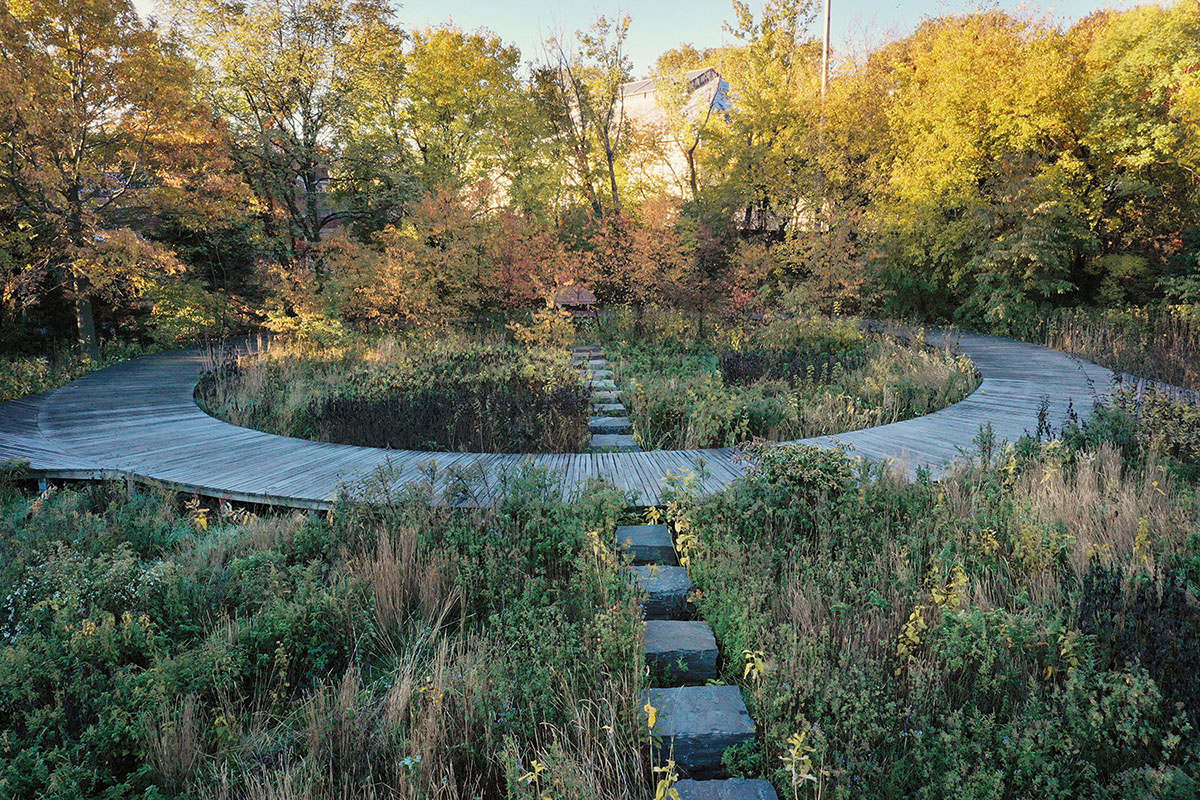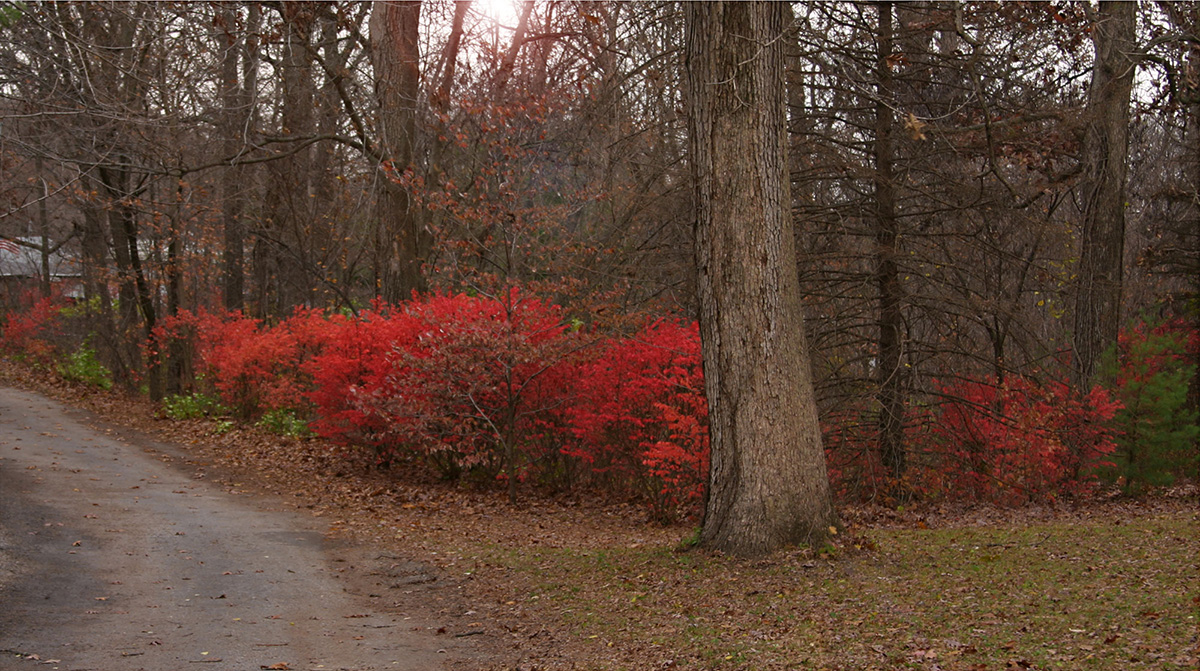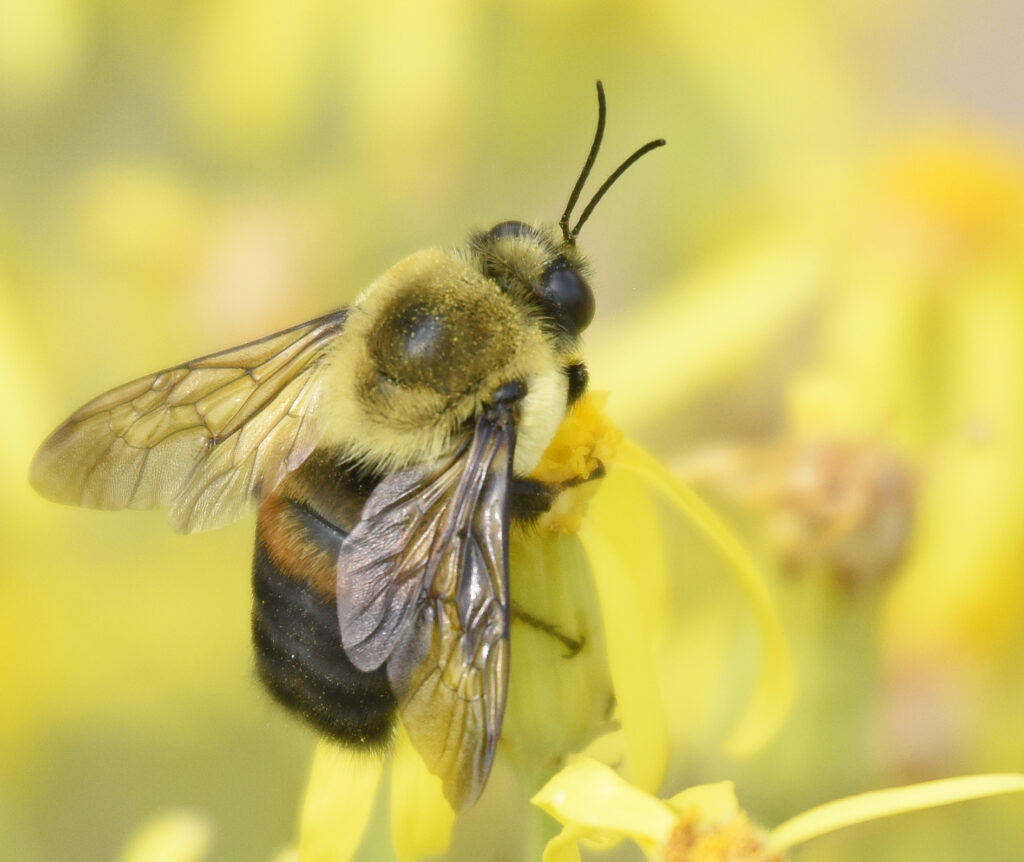
This is part of a series with Gardenista , which ran on December 14, 2023.
It’s winter. The trees are bare, the ground is (hopefully) covered in fallen leaves, and the palette of the landscape is muted. While it might look barren, there is a whole world living just out of sight. “Native bees might not be buzzing now,” says Sarah Kornbluth, a field associate in Invertebrate Zoology at the American Museum of Natural History. “But they are all around us, hibernating in soil, stems, cavities, standing dead vegetation, and leaf litter, ready to emerge next spring.” There are more than 3600 described species of native bees in North America, from large fuzzy bumblebees to tiny metallic green gems, some sporting masks and others flaunting their extra-long antennae, living in forests, deserts, tundra, meadows—basically anywhere there are flowers. While they might not get as much attention as, say, monarch butterflies, they are vital pollinators to our ecosystem and food web. They are also in trouble. Native bees are struggling due to habitat loss, pesticide use, and competition and disease from non-native honeybees. [To learn more about how honeybees compete with native bees, read this piece from Xerces Society.] At The Battery in downtown Manhattan, the garden team is working hard to support them. They removed their honeybee hives and are incorporating more pollinator-friendly native plants into the gardens, says Jennifer Bishop, zone gardener at The Battery. They’re also about to embark on a pollinator survey with Kornbluth.
“The Battery’s been interested in learning a lot more about all of the organisms that use the garden besides humans to incorporate into their education programs and landscaping management practices,” says Kornbluth. “I’m very interested in knowing which bees are living where, what they need, and how we can provide for them. When you look at a bee community, you can learn a lot about what resources are available because you can see what specialist bees are thriving where. Are there bees that prefer soil nesting or cavity nesting? What nesting habitats are being provided here? What flowers do they prefer? What is the community telling us about what the habitat is rich in or poor in?” Kornbluth and team started with a preliminary study of native bees at The Battery this year and will launch a full survey in 2024.
The team surveys the population by observing and collecting species with nets and by setting passive traps. The traps, which they call bee bowls, are plastic cups painted fluorescent yellow or blue, or white. These colors mimic the color of the nectar guides that flowers use to lure pollinators to visit. The cups are filled with soapy water to trap the insects. “We then collect, pin, and identify each species and will make observations of species we can identify without killing,” says Kornbluth. They will also post photographs of bees on iNaturalist for identification.
“The priority in gardening is no longer just about mastering an aesthetic,” says Bishop. “There is a shift toward being more mindful and ethical. We need to embrace the natural systems that we’ve just forgotten about.” Here’s what you can do at home.
Grow native plants in your garden.
Native insects coevolved with native plants. They’re part of an intricate food web system. For most organisms, non-native plants are like “plastic fruit in a fruit bowl,” says Kornbluth. “It may look good, but they won’t be able to eat it.” While nectar-eating insects are able to enjoy the sugary, calorie-rich nectar from a wide range of flowers, “pollen, which bees need to feed their young, is more likely to come from the local native species that they have been coevolving with them for many thousands of years,” says Kornbluth. At Perfect Earth Project, we advocate for at least two-thirds native plants in your garden.
Don’t use pesticides.
Even organic ones. Pesticides (and that includes insecticides, herbicides, fungicides) don’t discriminate and will kill all insects—not just the ones you’re targeting. When selecting plants at the nursery, ask to make sure they haven’t been treated with pesticides of any kind, especially neonicotinoids, a systemic insecticide that is absorbed by the entire plant rendering every part poisonous to pollinators.
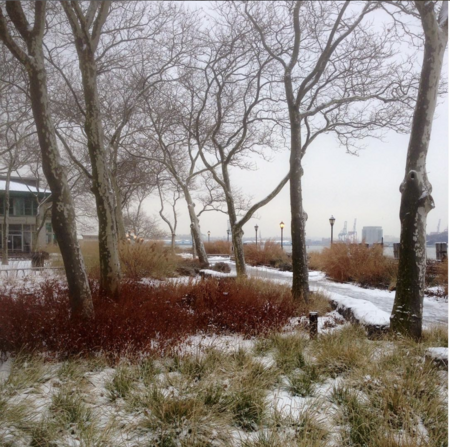
Provide Nesting Spots
Native bees nest in the ground and in stems and wood piles. “It’s important to remember that the standing dead vegetation you see is full of bees,” says Kornbluth. Try not to cut back stems when flowers are done blooming, but leave them for the bees. If you’re concerned about how that’s going to look, visit The Battery, says Bishop, and see how pretty it is all winter long. “Embracing a plant’s complete life cycle—from seedlings in spring to seed head or grass mound in winter—is a Piet Oudolf trademark,” says Bishop of the visionary Dutch landscape designer who created the garden’s master plan. “At The Battery we continue to display the array of forms and textures a plant possesses. By not deadheading we allow the life cycle to stay on display and integrate into design year-round. And this decay becomes abundant living matter and nest material for pollinators.” It’s also beautiful. “I love the aesthetic: the decay, structure, and different textures of every plant—they each have their own kind of personality,” says Bishop. But if you must cut some stems back, Kornbluth advises to leave last year’s stems as high as you can. While you’re at it, leave the leaves. In addition to feeding the soil, fallen leaves provide insulation for ground-nesters, like bumblebees and mining bees, as well as other hibernating organisms. “It prevents the surface of the earth from getting too cold, which impacts their survival over the winter,” says Kornbluth.
Look and Learn
“Do a small insect safari at home,” suggests Kornbluth. Bishop has been doing this in her own backyard in Westchester New York and happily admits the glee she feels when finding new species in her garden. “Give yourself the opportunity to be meditative and peaceful,” says Kornbluth. See who’s coming to eat. What do you notice about them? Do you see one with full pollen baskets (indentations on a bee’s rear legs that are covered in stiff hairs that trap pollen)? What plants are they visiting? When are they appearing? Share what you find on iNaturalist. “The whole process is very eye-opening, engaging, and connecting.” You’ll be amazed at what you discover. “Pollinators are often a very good indicator of ecosystem health because of their connectedness with plants,” says Kornbluth. “Plus, they’re adorable.”
Let’s meet some native bees:
Photos by Jennifer Bishop, unless otherwise indicated.
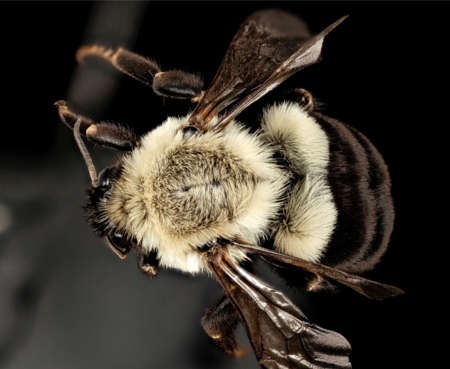
Common Eastern Bumblebee
Bumblebees are social, living in colonies. Kornbluth describes their life cycle like this: The queen overwinters, hibernating in her hidey-hole or hibernaculum, an underground spot like an abandoned mouse burrow that she had chosen the previous spring after mating. Then she comes out in the spring and starts to collect pollen and lay eggs. As her daughter workers become larvae, she feeds them, they pupate and become adult workers. Then they take over a lot of the jobs. She lays more eggs. The queen has all summer to build her nest until she produces new queens in late summer or early fall. Then she dies and the cycle continues. A closeup of a queen, Bombus impatiens.
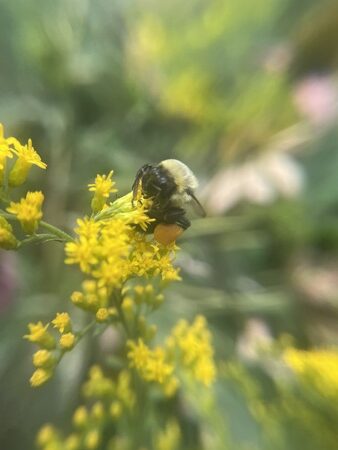
ABOVE is a female Eastern Bumblebee with full pollen baskets. “We think that bumbles are great to include because they are some of the easiest native bees to spot and learn about,” says Kornbluth.
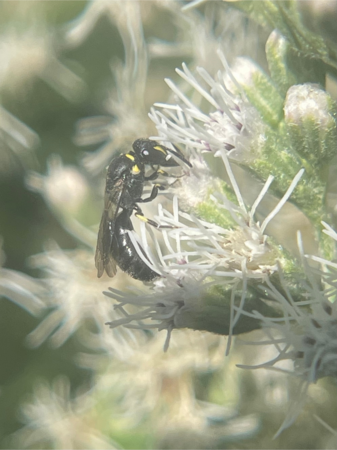
Masked bee
These tiny bees are solitary, nesting in twigs and stems. Since they’re so small, they prefer small flowers, even “ones we might not really notice, like those found in an alternative lawn” says Kornbluth, and because of their size, they can go deep inside flowers to get nectar. Not particularly hairy, they don’t carry pollen on their bodies, like other bees, but carry it in their “’crop,’ the upper part of the digestive tract.” It doesn’t get digested but is regurgitated when the bee gets back to the nest. “Many species of bees use their crop to carry nectar or water, but the masked bees also use it for carrying pollen,” notes Kornbluth. This masked bee was spotted foraging on snakeroot in Bishop’s garden. “It’s a super rigorous perennial with firework white flowers,” says Bishop, who cautions that it can spread vigorously.
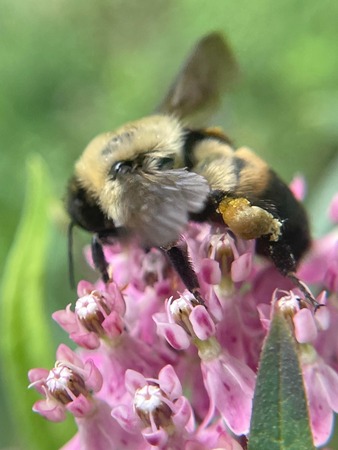
Only females have pollen baskets, as you can see on this fuzzy Brown-belted Bumblebee. Kornbluth explains how you can identify them: “A female Brown-belted bumblebee has 5 visible stripes (or segments) on its abdomen. The first stripe (closest to the thorax) has yellow hairs, the second stripe has a patch of yellow to brown hairs in the middle and black hairs on the sides. Stripes three, four, and five have black hairs and are hard to tell apart.” These large ground-nesters can be found in prairies, meadows, and fields where they reuse abandoned burrows or cavities.
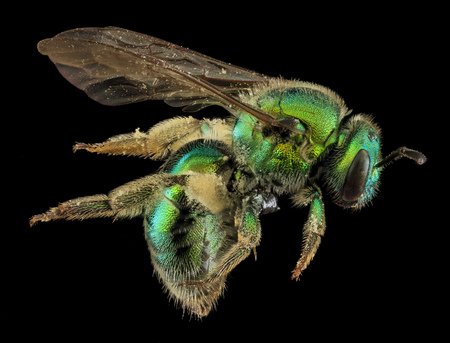
Green Sweat Bee
Sweat bees are small, docile, and great pollinators. They are also attracted to salt. Some are even attracted to mammal sweat. “People often mistake bright green sweat bees for flies,” says Kornbluth. One way to distinguish between the two is to look at their eyes. “Fly eyes take up more than 75% of a fly’s head, while bee and wasp eyes take up less than 50%,” she says. “You’ll be surprised how visible insect’s eyes are once you’re looking for them!”
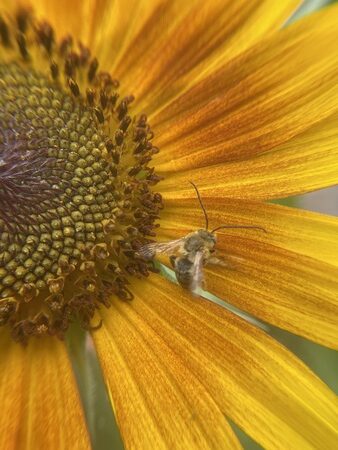
Male Longhorn bees feature very long antennae. These bees are specialists of Asteraceae, and especially love sunflowers. Look for them buzzing about in July and August.
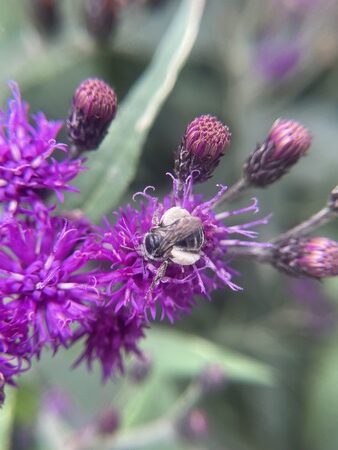
The pollen basket of the female Longhorn bee sits on much of its hind leg. It’s composed of dense hair to help trap pollen as it flies from flower to flower.
